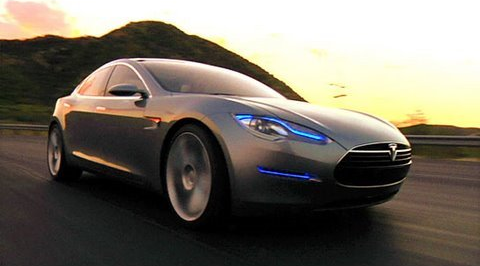In the ever-evolving landscape of electric vehicles, Tesla has once again captured the world’s attention with its latest battery breakthrough. This innovation not only promises to extend the range and efficiency of electric vehicles but also holds the potential to revolutionize urban transport as we know it. According to a 2023 report by Bloomberg Green, the global shift towards sustainable mobility is accelerating, with electric vehicle sales projected to surpass 50% of all new car sales by 2030. This article explores how Tesla’s new battery technology could be a game-changer for urban transport, offering insights into its potential impact and practical applications.
Tesla’s Battery Breakthrough: The 4680 Cell
What is the 4680 Battery Cell?
Tesla’s latest innovation, the 4680 battery cell, is poised to redefine industry standards. Named for its dimensions (46mm by 80mm), the 4680 cell offers a significant increase in energy density and output. This breakthrough was revealed during Tesla’s Battery Day in 2023 and is already being hailed as a cornerstone for next-generation electric vehicles.
- Higher Energy Density: The 4680 cells boast a fivefold increase in energy capacity compared to previous models.
- Improved Range: Vehicles equipped with these cells could see a range increase of up to 16%, according to Electrek.
- Lower Costs: By simplifying manufacturing processes, the 4680 cells could reduce battery costs by 14%.
How Does It Improve Urban Transport?
Urban environments, characterized by short commutes and frequent stops, stand to benefit immensely from these technological advances. The increased efficiency and range of vehicles equipped with 4680 cells mean less frequent charging, which is a significant advantage in cities where charging infrastructure may be limited.
- Reduced Charging Time: Faster charge times make on-the-go charging more feasible.
- Enhanced Performance: Improved power output translates to better acceleration and handling, crucial for urban driving.
- Sustainability Impact: Lower emissions and reduced reliance on fossil fuels align with global sustainability goals.
Practical Applications in Urban Settings
Charging Infrastructure: A New Standard
The rise of the 4680 cell technology necessitates a reevaluation of current charging infrastructure. Here’s how it might evolve:
- Increased Charging Stations: Cities could see a rise in the number of fast-charging stations, reducing the demand for home charging setups.
- Smart Grid Integration: With higher energy density, these batteries could better integrate with smart grids, optimizing energy use and reducing citywide power consumption.
- Public Transport Adoption: Buses and taxis could adopt 4680 cells, leading to cleaner public transport options.
Cost and Accessibility
One of the key challenges for electric vehicles has been cost. However, Tesla’s new batteries could change that narrative:
- Affordable EVs: With manufacturing costs reduced, electric vehicles will become more accessible to a broader audience.
- Incentives and Policies: Governments may introduce incentives to encourage the adoption of vehicles with such advanced technologies, further reducing the cost to consumers.
Environmental Benefits
The environmental implications of Tesla’s battery breakthrough cannot be overstated:
- Reduced Carbon Footprint: The increased efficiency of the 4680 cells means fewer resources are needed for production and operation.
- Recycling and Reuse: Tesla’s commitment to sustainability includes recycling programs for these new batteries, ensuring a closed-loop system.
How to Transition to Tesla’s New Battery Technology
Buying a Tesla with 4680 Cells
For consumers interested in purchasing vehicles equipped with the new 4680 cells, Tesla plans to roll out these models by late 2024. Here’s what to consider:
- Compare Models: Evaluate different Tesla models to determine which fits your needs best.
- Check Availability: Pre-order options may become available, so keep an eye on Tesla’s official announcements.
- Consider Incentives: Research government incentives that could offset purchase costs.
Charging Your Tesla Efficiently
To maximize the benefits of the 4680 battery cells, efficient charging practices are crucial:
- Use Fast Chargers: Look for Tesla Supercharger stations that support the new battery technology.
- Optimize Charging Schedule: Charge during off-peak hours to take advantage of lower electricity rates.
- Monitor Battery Health: Regularly check your battery’s performance using Tesla’s integrated monitoring systems.
Conclusion: The Future of Urban Mobility
Tesla’s latest battery innovation stands as a beacon of progress in the quest for sustainable urban transport. By improving range, reducing costs, and enhancing performance, the 4680 battery cells are set to transform how we navigate our cities. As Tesla continues to push the boundaries of what’s possible, urban environments worldwide are poised to reap the benefits of cleaner, more efficient transport systems.
As we look towards the future, the question remains: How quickly will other manufacturers adopt similar technologies, and what will that mean for the global shift towards electric mobility? Join the conversation and share your thoughts on how these advancements can shape the future of urban transport.

